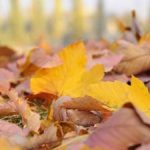I console myself with the reminder that we learn from our mistakes. In the case of some errors though, the fix requires a lot of work.
In the past, I thought I was planting appropriate species, but in actuality I planted and established aggressive, non-native plants. They have become pernicious invaders, preventing native species from growing. They’ve resisted my removal tactics, but I will fight on!
In the meantime, learn from my mistakes and avoid these persistent plants.
Vinca groundcover: This evergreen groundcover enjoys shade and is deer-resistant. Sounds great? Wait for the downside. Vinca dislikes heat and looks half-dead and wilted through the summer and fall. It’s prone to infestation by caterpillars that contribute to its moth-eaten appearance. But if given enough water, within a few years it expands and smothers preferred plants. It’s also known to escape yards and take over natural areas.
Pyracantha: The red berries and evergreen leaves are quite pretty. What’s not attractive is the painful red swelling that some people (me!) have in reaction to brushing up against one of the thorns. Hence the common name “firethorn.” To make matters worse, the thorn-laden branches infringe on my neighbor’s yard. Pyracantha also has a reputation for wandering into natural areas.
Nandina: Rounding out the top three plants I wish I’d never planted is nandina. Sure it’s tough, evergreen and deer often leave it alone. But it also spreads quickly from roots and berries. Once it gets established, it can be difficult to keep in its original planting area. I’ve seen nandina during my hikes in area parks and do not want to contribute to its spread.
Together with local natural resource experts, we’ve compiled a comprehensive list of other aggressive non-native plants. The good news: there are lots of great alternatives.




